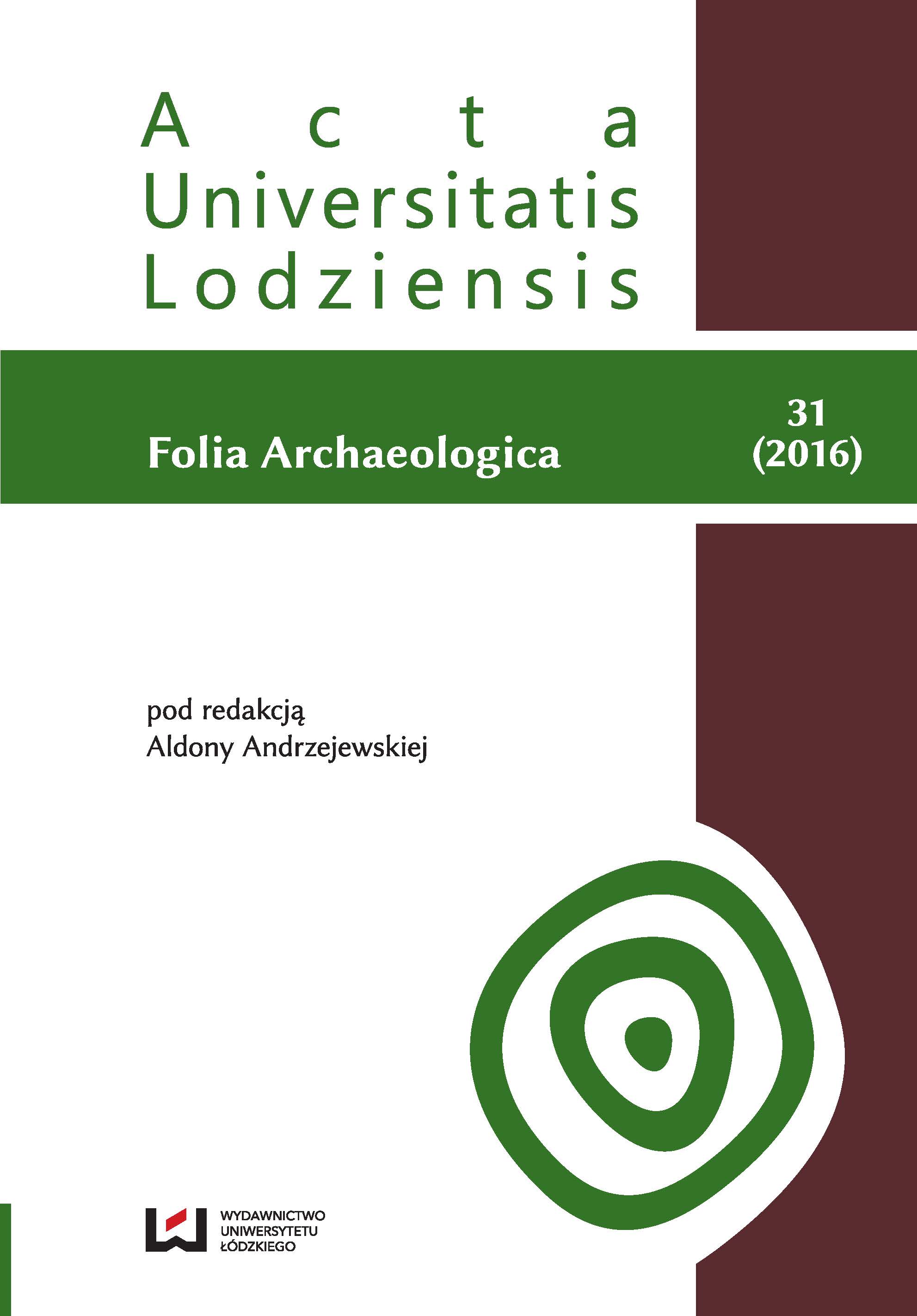Z zagadnień rzymskich importów z cmentarzyska kultury wielbarskiej w Górzycy na Ziemi Lubuskiej
On the issue of the Roman imports from a cemetery of the Wielbark Culture in Górzyca in Lubusz Land
Author(s): Krzysztof Socha, Julianna Sójkowska-Socha, Lubomira TyszlerSubject(s): Archaeology, Cultural history, Ancient World
Published by: Wydawnictwo Uniwersytetu Łódzkiego
Keywords: Culture of Wielbark; Ziemia Lubuska; Górzyca; the roman imports; terra sigillata
Summary/Abstract: The archaeological site no. 20 in Górzyca is one of the newly identified biritual cemeteries of the Wielbark Culture in the Middle Odra Region. There were conducted intensive rescue researches in the years 2008–2010. Several characteristic burial structures, namely stone pavements and stone wreaths were discovered in the exposed part of the cemetery. In the inventories of many burials the Roman imported artifacts were found. The most numerous among them are glass and amber beads, usually the components of necklaces which were the equipment of rich women (ob. 828, ob. 85) and a child (ob. 198). Two fibulae made of bronze stand out from the rest artifacts, one of Riha 7.11.1 type or Feugere 25a type (ob. 440) and the second, damaged with an enamel (?) of Thomas A type (ob. 459). To the findings from the rich graves belong two damaged coins, presumably subaerati. A 22–25 year old young woman’s burial had particularly rich equipment (grave no. 9/ob/85), containing imported objects, a rich necklace composed of i. a. numerous glass and amber beads, and a relief bowl of Drag. 37 type from Lezoux. The imported vessel, originated from the workshop of Laxtucissa (145–170 or 150–170) or Laxtucissa- Paternus II (160–170/180), allows us to propose a determination of the lower date of burial for about 150/160 or 160/170 (depending on the established attribution of vessel). The manufactures of listed potters belong to the horizon of the Marcomanni wars and are found in many sites in Pannonia in the layers of destruction from the aforementioned wars. The cartographical study of the distribution of Laxtucissa’s and Paternus II’s (or Paternus) vessels discovered in areas to the north of the middle Danube indicates their presence in Lower Austria, Czech, Moravia, Slovakia, between Pannonia and Dacia, and in Poland. The Roman imports, identified in the cemetery in Górzyca, proves contacts between the South and Lubusz Land especially in the phases B2/C1–C1a.
Journal: Acta Universitatis Lodziensis. Folia Archaeologica
- Issue Year: 2016
- Issue No: 31
- Page Range: 55-75
- Page Count: 21
- Language: Polish

